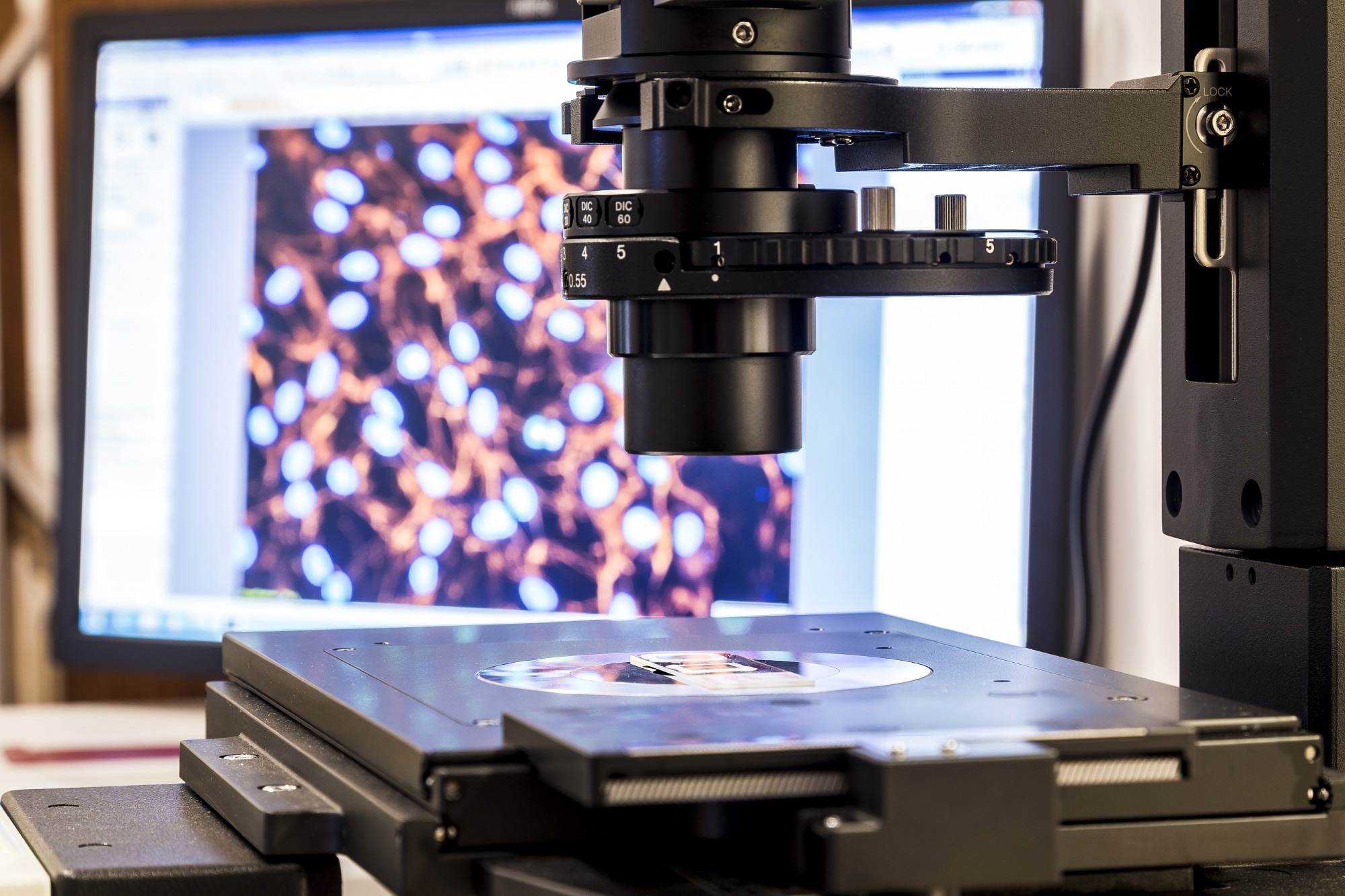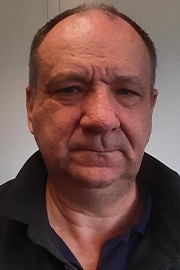Please can you introduce yourself, tell us about your career background, and what inspired your career in biology and medicine?
I graduated in medicine but never practiced in hospitals or medical centers. After my studies, I started working as an assistant in histology at the University of Fribourg in Switzerland. My first research projects included image processing, scanning tunneling, and atomic force microscopy.
Later, and for most of the rest of my scientific carrier, I focused primarily on the biological applications of AFM. For the past ten years, my research interest is about nanomotion, i.e., the study of oscillations at a nanometric scale of living organisms.

Image Credit: dominikazara/Shutterstock.com
You started working on biological applications of the atomic force microscope (AFM) in 1992. From your perspective, how has the antibiotic resistance landscape changed over the last two decades? What role has the advancement in technology played in furthering our understanding?
In the early '90s, the AFM was mainly used for imaging. Later, AFM microscopists noticed that the instrument could also be used to explore the mechanical properties of living organisms. More recently, many "exotic" applications of the AFM have emerged, such as its use to weigh single cells or study their oscillations at the nanometric scale. In the 1990s, antibiotic resistance was not as serious a problem as today, but several teams were already using AFM to assess the effects of antibiotics on bacterial morphology.
The first investigations were limited to structural changes, but later, as the fields of application of AFM expanded, the instrument made it possible to monitor the mechanical properties of the bacterial cell wall upon exposure to antibiotics. In the 2010s, with G. Longo and G. Dietler, we demonstrated that AFM could also track nanoscale oscillations of living organisms. The very first application we had in mind was using the instrument to perform rapid antibiotic susceptibility testing.
We have therefore developed devices based on dedicated AFM technology to perform fast AST (i.e., in 2-4h). AFM-based nanomotion detection instruments are already implemented in medical centers in Switzerland, Spain, and Austria. However, this type of device has some drawbacks, including the need to fix the organism of interest on a cantilever. To overcome this limitation, we have developed with R. Willaert a nanomotion detector based on an optical microscope.
Your most recent research has led to the development of a novel and highly efficient technique for rapid antibiotic susceptibility testing using optical microscopy. Please could you tell us why the development of rapid, affordable, and efficient testing methods is so important in the world of antimicrobial resistance?
Rapid antibiotic susceptibility testing could reduce the use of broad-spectrum antibiotics. Traditional ASTs based on replication rate require 24 hours (but up to 1 month in the case of tuberculosis) to identify the most effective antibiotic. Doctors prescribe broad-spectrum antibiotics between the patient's admission to a medical center and the results of the AST.
These drugs quickly improve patients' conditions but, unfortunately, promote resistance. A rapid AST that could identify the most suitable antibiotic within 2-4 hours would eliminate broad-spectrum antibiotics and increase treatment efficiency and reduce the development of resistant bacterial strains. Since bacterial resistance is a global problem, rapid ASTs should also be implemented in developing countries. Therefore, affordable and simple-to-use tests are needed.

Image Credit: Fahroni/Shutterstock.com
Were there any limitations and obstacles you faced in the research process? If so, how did you overcome them?
Antibiotic sensitivity detection with ONMD is very similar to the AFM-based technique. As long as the bacterium is alive, it oscillates; if the antibiotic is effective, it kills the micro-organism, and its oscillations stop. The first limitation we faced when developing the ONMD was our microscopes' depth of field of view. To prevent the bacteria from leaving the focal plane of the optical microscope during the measurement, we had to constrain the microbes into microfluidic channels a few micrometers high.
Microfabrication of such devices is relatively straightforward in an academic environment, but we were looking for simpler solutions. One option for constructing such a device is to use 10-micron double-sided rubber tape. It allows you to "build" a microfluidic chamber in 5 minutes with two glass coverslips and a puncher.
Another challenge was nanoscale motion detection. For this purpose, we used freely available cross-correlation algorithms that achieve sub-pixel resolution. (i.e., a few nanometers). We first developed the ONMD for larger organisms, such as yeast cells, and expanded the method to bacteria. This further development took us around two years.
You worked alongside Dr. Ronnie Willaert, a professor of structural biology at Vrije Universiteit Brussel, on developing this new rapid AST technique. How did your areas of expertise and research backgrounds complement each other in developing ONMD?
R. Willaert is an expert in yeast microbiology and microfluidics, while our team in Lausanne is primarily involved in AFM-based nanomotion detection and applying AFM to clinically relevant problems. The two teams were supported by a joint grant from the Swiss National Science Foundation and the Research Foundation Flanders (FWO) which enabled the development of the method.
The field of antimicrobial resistance requires a high level of international collaboration, with everyone working together to achieve a common goal. With antimicrobial resistance rising to dangerously high levels in all parts of the world, how important is collaboration in this field?
Our project required expertise in various fields, such as microbiology, microscopy, microfluidics, programming, and data processing. In the development of rapid AST instruments and many others, only a multidisciplinary approach and close collaboration between teams with complementary expertise is today the only path to success.
You and Dr. Willaert have said, 'The simplicity and efficiency of the method make it a game-changer in the field of AST.' Can you please expand on what makes ONMD a game changer in the AST field and what implications this research could have in clinical and research settings?
As mentioned earlier, bacterial resistance is a global health problem. Rapid AST should also be easily implemented in developing countries to limit the spread of resistant strains. The cheaper and simpler the technique, the more likely it is to be used on a large scale. We are convinced that the ONMD approach can meet these requirements. ONMD could also be used for drug discovery or basic research.
While we recognize the importance of rapid AST, what next steps must be taken before this technique can be used globally in research and clinical landscapes?
For fundamental research, there are no other important developments to be made. Any reasonably equipped research center can implement the technique and use it. Regarding implementing the technique in developing countries or extreme environments, stand-alone devices have to be used, which have yet to be manufactured.
There is a rapidly expanding need for efficient AST globally; however, the need for affordable, accessible, and simple techniques are of grave importance in developing countries disproportionately affected by antibiotic resistance due to existing global health disparities. Could this rapid AST technique be utilized in low-middle-income countries to slow the growing spread of multi-resistant bacteria? What would this mean for global health?
We are confident that ONMD-based AST testing can soon be implemented in research centers in both developed and developing countries. However, accreditation by the health authorities is necessary to use it as a standard diagnostic tool; this process can take several years, depending on the government health policy.
What's next for you and your research? Are you involved in any exciting upcoming projects?
We want to develop a self-contained device for extreme environments. It would consist of a small microscope equipped with a camera and a data processing unit. The microfluidic part of the device could contain different antibiotics ready to be tested.
The ONMD technique could also monitor contamination levels in enclosed environments such as submarines, spacecraft, and space stations. One of our recent projects is funded by the European Space Agency (ESA) to develop a rapid antifungal susceptibility test that could work in microgravity. Additionally, ONMD could be used for even more exciting projects, such as chemistry-independent life detection in the search for extraterrestrial life.
Where can readers find more information?
- Villalba MI, Rossetti E, Bonvallat A, Yvanoff C, Radonicic V, Willaert RG*, Kasas S.*.Simple optical nanomotion method for single-bacterium viability and antibiotic response testing. PNAS 2023, May 2;120(18):e2221284120. doi: 10.1073/pnas.2221284120. Epub 2023 Apr 24. PMID: 37094120. * Contributed equally. https://doi.org/10.1073/pnas.2221284120
- Radonicic, V.; Yvanoff, C.; Villalba, M.I.; Devreese, B.; Kasas, S.; Willaert, R.G. Single-Cell Optical Nanomotion of Candida albicans in Microwells for Rapid Antifungal Susceptibility Testing. Fermentation 2023, 9:365. https://doi.org/10.3390/fermentation9040365
- Parmar P, Villalba MI, Horii Huber AS, Kalauzi A, Bartolić D, Radotić K, Willaert RG, MacFabe DF and Kasas S. Mitochondrial nanomotion measured by optical microscopy. Front. Microbiol. 2023, 14:1133773. https://doi.org/10.3389/fmicb.2023.1133773
- Starodubtseva MN, Irina A. Chelnokova IA, Shkliarava NM, Villalba MI, Tapalski DV, Kasas S, Willaert RG. Modulation of the nanoscale motion rate of Candida albicans by X-rays. Front. Microbiol. 2023, 14:1133027. https://doi.org/10.3389/fmicb.2023.1133027
- Radonicic V, Yvanoff C, Villalba MI, Kasas S, Willaert RG. The Dynamics of Single-Cell Nanomotion Behaviour of Saccharomyces cerevisiae in a Microfluidic Chip for Rapid Antifungal Susceptibility Testing. Fermentation. 2022; 8(5):195. https://doi.org/10.3390/fermentation8050195
About Dr. Sandor Kasas
Nanomotion is a fascinating and novel approach to observing living organisms.
Our team focuses almost exclusively on recording the nanomotion of bacterial mitochondria and mammalian cells with optical and AFM-based devices.
Recently, we demonstrated that the technique could be used not only for fast antimicrobial sensitivity testing but also to explore the metabolism of unicellular organisms. We hope our efforts will permit us to expand the application domains of ONMD.